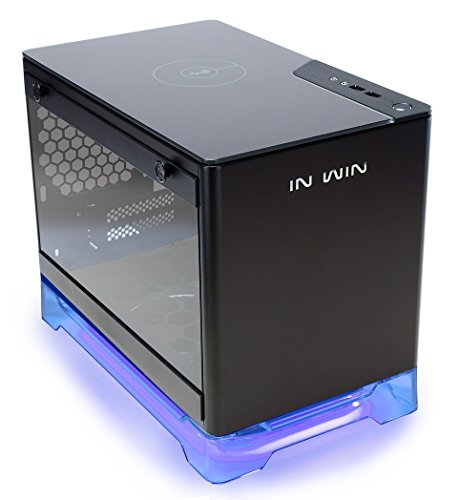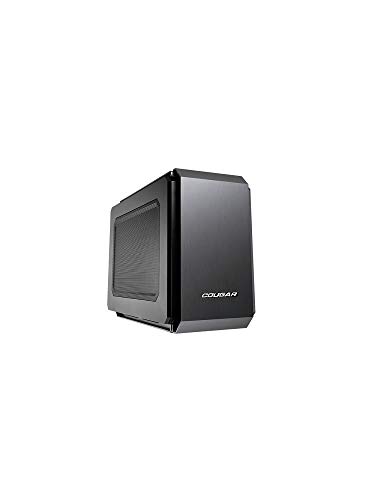Micro-ATX VS Mini-ITX Cases | The Definitive Guide
A computer case is the most apparent part of your computer system that not only provides great aesthetics but also plays a vital role in the efficiency and compatibility of your system. As there are a lot of cases in the market, it becomes confusing for the customer to choose a case which, first of all, provides spectacular performance and also fulfills other requirements, as there are many people who prefer small cases. That is why one of the most famous form factors of computer cases are Micro-ATX and Mini-ITX. Micro-ATX cases provide support for Micro-ATX motherboards such as these A320 motherboards and are bigger than the Mini-ITX cases. In this article, we will look upon various aspects of these cases and see if one of them is more worthy for your perfect dream setup.
Our Recommendations
| # | Preview | Name | Total Expansion Bays | RGB | Purchase |
|---|---|---|---|---|---|
| 1 |  | Thermaltake Core V1 Snow Edition | 4 |  | Check Price |
| 2 |  | Cooler Master Elite 130 | 9 |  | Check Price |
| 3 |  | BitFenix Prodigy Arctic White | 15 |  | Check Price |
| 4 |  | InWin A1 Black | 2 |  | Check Price |
| 5 |  | Cougar QBX Pro | 5 |  | Check Price |
| # | 1 |
| Preview |  |
| Name | Thermaltake Core V1 Snow Edition |
| Total Expansion Bays | 4 |
| RGB |  |
| Purchase | Check Price |
| # | 2 |
| Preview |  |
| Name | Cooler Master Elite 130 |
| Total Expansion Bays | 9 |
| RGB |  |
| Purchase | Check Price |
| # | 3 |
| Preview |  |
| Name | BitFenix Prodigy Arctic White |
| Total Expansion Bays | 15 |
| RGB |  |
| Purchase | Check Price |
| # | 4 |
| Preview |  |
| Name | InWin A1 Black |
| Total Expansion Bays | 2 |
| RGB |  |
| Purchase | Check Price |
| # | 5 |
| Preview |  |
| Name | Cougar QBX Pro |
| Total Expansion Bays | 5 |
| RGB |  |
| Purchase | Check Price |
Last Update on 2024-07-26 at 19:09 / Affiliate links / Images from Amazon Product Advertising API
Cooling Capability
As it is known that micro-ATX cases are bigger than mini-ITX cases, it is crystal clear that micro-ATX cases support a wider variety of cooling solutions and are generally much better in terms of cooling performance. They can have a larger number of fans or radiators in case of liquid cooling and also, big size radiators can be easily coupled with them such as a 280mm or a 360mm radiator.

On the other hand, mini-ITX cases support a low number of fans and they have minimal radiator support and limited to 120mm in most of the cases. This results in much lower airflow leading to higher component temperatures. Things can be a lot better if you are planning for a custom loop cooling which can be, in fact, much better than an air-cooled micro-ATX case but then again you can also create a custom loop for a micro-ATX case.
Pricing
It is a good point to note that the mini-ITX cases, due to their small size, have a lower manufacturing cost, which in terms results in a lower price. However, there are a lot of mini-ITX cases which cost much more than micro-ATX ones. The reason for this is that even though the material cost of such cases is low, the smaller size requires sophisticated design which becomes costly. Moreover, even if you buy a cheap mini-ITX case, the cost of the compatible hardware for such a case would be higher than standard-sized components. Therefore, if you are inclining towards a mini-ITX case just because of pricing, then you should avoid such a purchase because it will cost you more in the longer terms.
Portability

Now, unlike other features, things are pretty much in favor of mini-ITX cases when it comes to portability. Mini-ITX cases are also much lighter in weight as they are designed having portability in mind. If you are considering to buy such a case, then you can have a look at our recommendations for the best Mini-ITX cases here. Many of such cases even provide handles for easy transportation. Micro-ATX cases, on the other hand, provide no such functionality and there are very few micro-ATX cases which can be described as “portable”.
Upgradability

Micro-ATX cases used to be much more upgradable than mini-ITX cases but this is not the case anymore. Most of the high-end motherboards like these mini-itx 9900k motherboards are also available in all kinds of form factor and the high-end graphics cards are also easily available such as Zotac or Gigabyte’s Mini editions. In the case of custom loop cooling, you can also couple a liquid-cooled graphics card with mini-ITX cases easily, as these graphics cards are very slim and have a moderate length.
Therefore, in terms of upgradability, it is a “TIE” when it comes to the comparison between both types of cases. However, it is to be noted that mini-ITX cases by no means support multiple graphics cards.
Shopping Choice
As the micro-ATX cases are a lot more popular than the mini-ITX cases, there are many options to consider and thus there is a greater chance that you will find a case that will be according to your personal preference. If you are considering buying a micro-ATX case, then you can check some of the best micro-atx cases here.
There are also many mini-ITX cases too but there are not many “good” mini-ITX cases that will cater to your needs. Hereby, it will be better to consider a micro-ATX case if you are inclined towards the aesthetics of the case.
Verdict – Micro-ATX (Winner)
With all that being said, we will recommend mini-ITX cases if you move a lot and consider portability a definite feature. You can also consider these cases for HTPC, as they do not cover much space. Other than that, you should better buy a micro-ATX case, as they will provide a wider range of functionalities.






